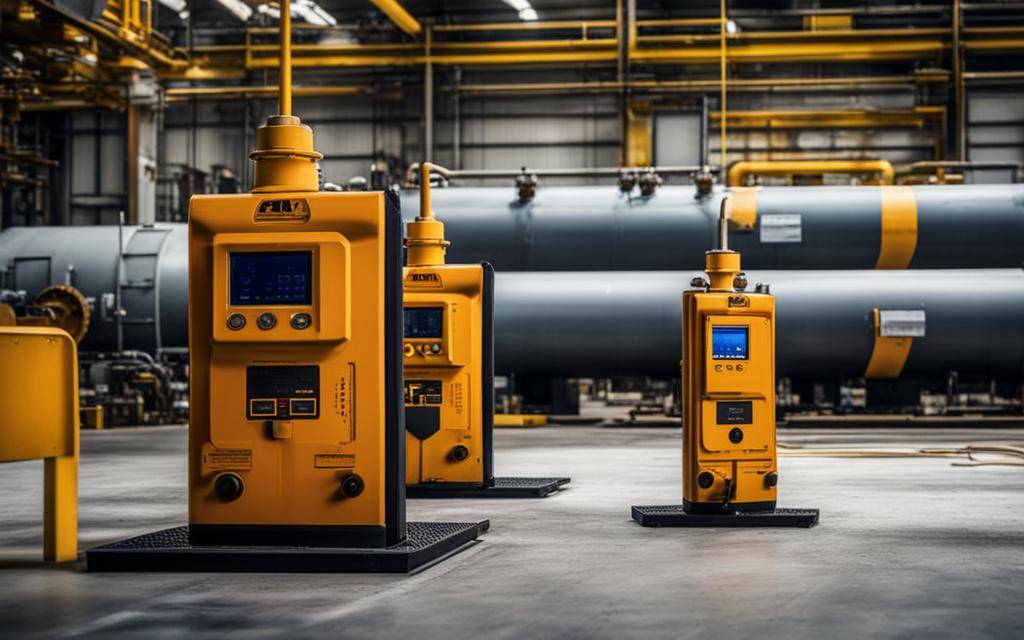Gas detectors play a crucial role in ensuring safety in various environments, particularly in explosive atmospheres. These environments can pose significant risks due to the presence of flammable gases or vapors. To address this, specialized gas detectors, such as ATEX rated gas detectors, are designed to operate safely in explosive atmospheres, also known as ATEX zones.
ATEX rated gas detectors comply with specific standards to ensure their suitability for use in explosive atmospheres. These detectors undergo a series of rigorous requirements, including intrinsically safe designs and explosion-proof features. By meeting these standards, ATEX rated gas detectors provide reliable detection while minimizing the risk of ignition.
However, it’s important to note that not all environments require ATEX rated gas detectors. In non-ATEX zones, safe area detectors are recommended. These detectors offer the same level of safety but without the added cost and installation limitations associated with ATEX rated detectors.
Whether it’s ATEX rated or safe area detection, gas detectors are indispensable tools in safeguarding individuals and environments from the potential dangers of explosive atmospheres.
Where Can You Use Safe Area VOC Detectors?
Safe area VOC detectors play a crucial role in ensuring safety and environmental compliance across various industries. These detectors are extensively used in industries such as glue manufacturing, paint manufacturing, and chemical manufacturing, where the emission of Volatile Organic Compounds (VOCs) is common during the manufacturing process.
VOC gas detectors act as a preventive measure to avoid overexposure to harmful VOCs, especially in areas classified as ATEX zones. By continuously monitoring the air quality and VOC levels, these detectors help mitigate the risks associated with VOCs and ensure the safety of the workforce.
Furthermore, safe area VOC detectors are also employed in environmental emission tracking and research facilities. These detectors play a vital role in identifying and monitoring VOC emissions to prevent water and air pollution caused by the release of harmful chemicals. The accurate detection of VOCs enables companies to implement necessary measures to reduce emissions and protect the environment.
Additionally, safe area VOC detectors find applications in non-ATEX environments such as laboratories, clean rooms, medical facilities, industrial hygiene, and pharmaceutical applications. These controlled environments often experience the release of VOCs through research activities, chemical handling, or cleaning processes. The presence of safe area VOC detectors in these areas ensures the early detection of VOCs and helps maintain a safe and healthy working environment.
In summary, safe area VOC detectors are indispensable tools used across various industries and research facilities to monitor, detect, and prevent the harmful effects of VOCs. By employing these detectors, companies can prioritize the safety of their employees, reduce environmental pollution, and ensure regulatory compliance.
The Importance of Testing and Certification for Gas Detectors in Explosive Atmospheres
Gas detectors used in explosive atmospheres play a critical role in ensuring the safety of personnel and preventing potential disasters. To guarantee their reliability and performance, these detectors must undergo rigorous testing and certification in accordance with industry standards, such as EN 60079-29-1.
EN 60079-29-1 is a specific standard developed for gas detectors that detect flammable gases. It outlines the essential requirements for testing and performance evaluation, ensuring that the detectors meet stringent criteria for accuracy, stability, environmental resilience, and response time.
Accurate gas sensor performance is paramount in explosive atmospheres. The choice of a high-quality sensing element is crucial for swift and precise gas detection. Gas detector testing is a comprehensive process that involves assessing various factors to validate the sensor’s accuracy and performance, providing manufacturers and users with confidence in the device’s effectiveness.
This commitment to testing and certification extends to both fixed gas detectors, which are permanently installed for continuous monitoring, and portable gas detectors, which are handheld devices used for testing in confined spaces or smaller areas. Whether installed in an industrial facility or carried by emergency responders, properly tested and certified gas detectors instill trust in their ability to detect and respond to potential hazards.

